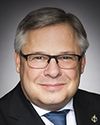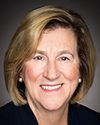Good afternoon, everyone.
Mr. Chair, members of the committee, thank you for inviting me.
Based on my experiences with Indigenous communities, public services and academia, both as professor and student, more and more, facilitating Indigenous knowledge and science within the Canadian science system is what's guiding my career and my life.
The braiding or weaving of indigenous knowledge and indigenous science is increasingly a global priority. From our challenges with conserving planetary biodiversity, mitigating or adapting to climate change, building a net-zero economy or ensuring both food security and food sovereignty, the work that we put into building processes and infrastructure to support the weaving and resourcing of indigenous science also improves our ability in Canada to build evidence-based policy and decision-making that optimize using knowledge from people who are often the closest to and have the longest relationships with many of the phenomena and systems that we wish to study.
As the committee has heard, indigenous science is a place-based knowledge system that is responsive to the needs of local people and enhances our relationships and responsibilities to each other, whether that be among humans, among species or in particular landscapes, but beyond that, indigenous science is also driven by distinct indicators and values.
Among the people I belong to, the Anishinabe, we have a variety of teachings, such as the seven grandfather teachings, or principles like the seven-generation concept that not only help guide our decisions and science development for today, but also give us an evaluative metric enabling us to measure the quality of our science and decisions for the future of those not yet born and even their children.
In Canada, we have some of the world's premier researchers in health, natural resource management, engineering, conservation biology and the list can go on and on, yet despite more interaction with science than ever through technology and the outputs of science, the youngest generations of Canadians risk facing shorter lifespans, more economic insecurity, more risks to life and livelihood due to climate change and—especially dear to me—less diverse, less beautiful and less resilient ecosystems and environments.
Indigenous science alone will not solve these problems. However, it's through the building of mechanisms that create space for indigenous science and self-determination in that science that we can enhance the thoroughness of our current scientific approaches. We can also improve the trust and transparency in our science and the decisions that stem from it, and we can build better ways to implement, share, mobilize and translate science for stakeholders and rights holders.
Through things like indigenous-led science priority-setting and indigenous science evaluation, we can drive science initiatives and funding opportunities that will drive the well-being of people, again, whether that be personal, economic or sociological, and at the same time we can also enhance that sense or the idea that science investments of all manners, both indigenous and non-indigenous, will improve and benefit the lives of people, their environments and workplaces.
From enhancing our ability to monitor sea ice or environmental change to providing modern crop breeders with plant traits to build new drought- or pathogen-resistant cultivars, the science and technology that have been developed by indigenous nations are already embedded in our science systems, as well as in our national and global economies.
However, a lot of this work has gone unrecognized and, more importantly, under-resourced, and it's this historical under-resourcing that represents an inefficiency in our science strategies and systems. Whereas professors like me have the opportunity to dedicate time to things like fundamental questions associated with sustainable agriculture or beneficial insect conservation, many land-based educators and knowledge-holders in our communities don't have that same resourcing support to continue developing and building their local knowledge systems.
Similarly, while it can always be better, funding and resources for the creation of the next generation of scientists—our undergraduate and graduate students—can be accessed through a variety of means in academia, while with indigenous communities, accessing funding to support the next generation of knowledge-holders is a lot more difficult, often due to funding programs' structures or processes.
Beyond these what I consider relatively easy issues to solve, we have larger-scale challenges that will require collaboration among Canada, the provinces and territories, academia, indigenous communities and industry. The building of an indigenous knowledge-holder or a scientist requires a lifelong network of support and outreach structures to create ethical space where scientific and indigenous knowledge can interact and be taught alongside each other and weave, where appropriate, for better evidence-based policy-making.
This involves a huge, wholesale effort to support the professional development of everyone in that science ecosystem, from the person collecting that science to the policy- and decision-makers using that science and even to the science teachers in our schools and communities.
Through the work of the interdepartmental indigenous science, technology, engineering and mathematics cluster, we are now just scratching the surface of supporting this work. The I-STEM cluster—



